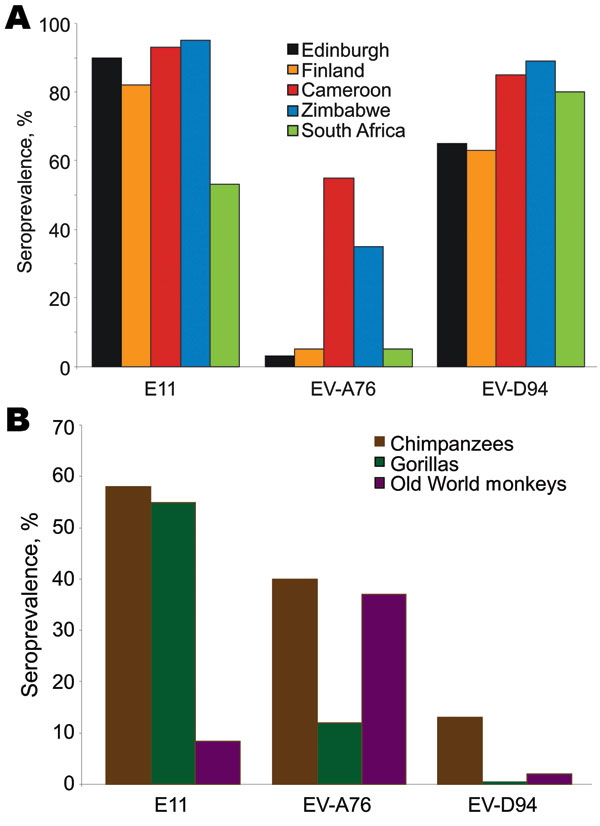Volume 18, Number 2—February 2012
Dispatch
High Seroprevalence of Enterovirus Infections in Apes and Old World Monkeys
Figure

Figure. Seroprevalence of neutralizing antibody (titers >16) to echovirus 11 (E-11) and enteroviruses A76 (EV-A76) and D94 (EV-D94) in A) human populations and B) nonhuman primates.
Page created: January 18, 2012
Page updated: March 13, 2012
Page reviewed: March 13, 2012
The conclusions, findings, and opinions expressed by authors contributing to this journal do not necessarily reflect the official position of the U.S. Department of Health and Human Services, the Public Health Service, the Centers for Disease Control and Prevention, or the authors' affiliated institutions. Use of trade names is for identification only and does not imply endorsement by any of the groups named above.